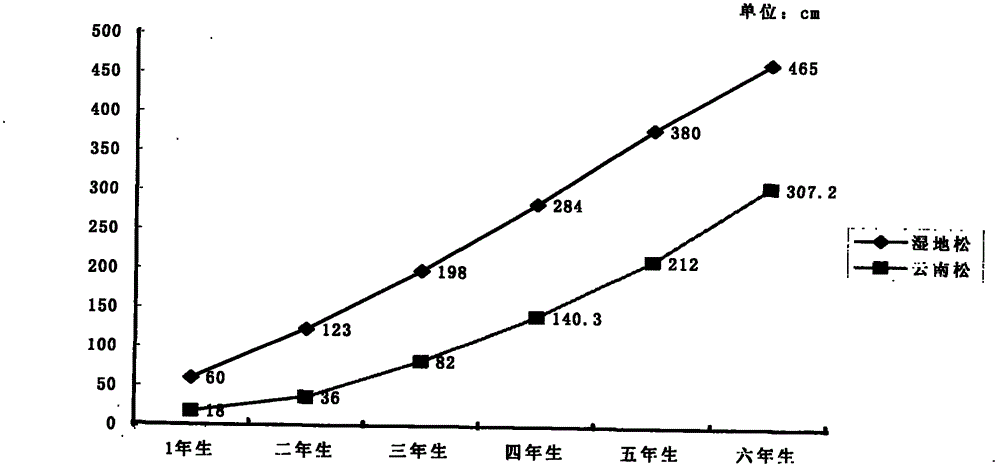Method for treating stony desertification in semiarid hot and warm area by applying improved pinus elliottii
A slash pine, semi-arid technology, applied in the fields of botanical equipment and methods, climate change adaptation, seed and rhizome treatment, etc., can solve the problem of Caribbean pine not being able to grow in areas with low accumulated temperature, etc.
- Summary
- Abstract
- Description
- Claims
- Application Information
AI Technical Summary
Problems solved by technology
Method used
Image
Examples
Embodiment Construction
[0027] (1) Seedling raising method of slash pine
[0028] Slash pine seeds come from Florida, USA. Mycorrhizal seedling cultivation method is as follows:
[0029] Prepare seedling substrate soil: 25% raw soil, 60% mycorrhizal soil, 10% burned soil, 5% calcium magnesium phosphate fertilizer or superphosphate. Among them, the raw land soil is the soil that has not been planted with crops or grown trees and herbs, and contains less pathogenic bacteria, which reduces the occurrence of pine damping-off and blight; For silky soil, remove litter and fallen leaves and weeds on the surface when collecting soil, and dig out mycorrhizal soil at a depth of 10cm to 20cm. Put the prepared matrix soil into 6.5cm×13cm plastic bags, arrange 25 bags in each row, the width of the seedbed is 1.2 meters, and the length depends on the terrain.
[0030] Planting slash pine mycorrhizal seedlings: Soak the seeds in warm water with an initial temperature of 60°C, cool them naturally for 24 hours to ...
PUM
 Login to View More
Login to View More Abstract
Description
Claims
Application Information
 Login to View More
Login to View More - R&D Engineer
- R&D Manager
- IP Professional
- Industry Leading Data Capabilities
- Powerful AI technology
- Patent DNA Extraction
Browse by: Latest US Patents, China's latest patents, Technical Efficacy Thesaurus, Application Domain, Technology Topic, Popular Technical Reports.
© 2024 PatSnap. All rights reserved.Legal|Privacy policy|Modern Slavery Act Transparency Statement|Sitemap|About US| Contact US: help@patsnap.com










